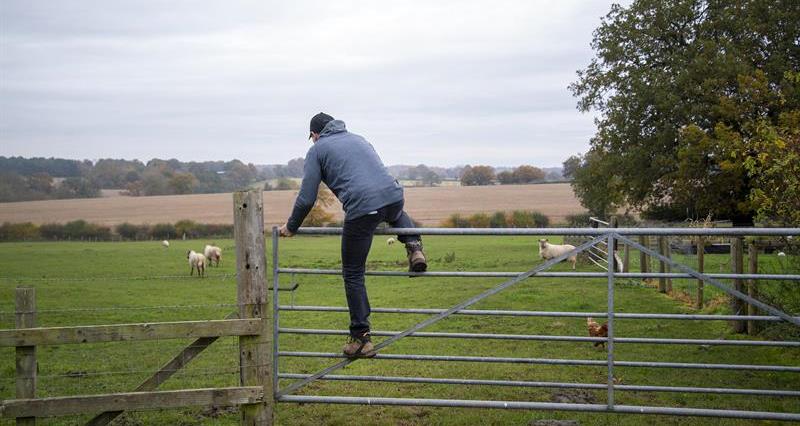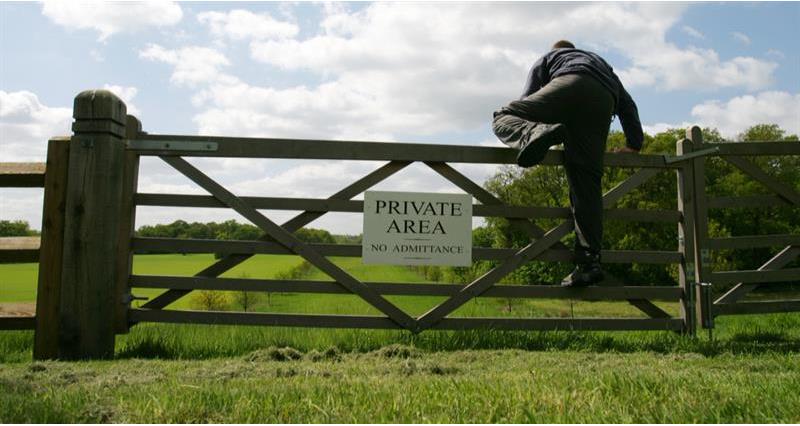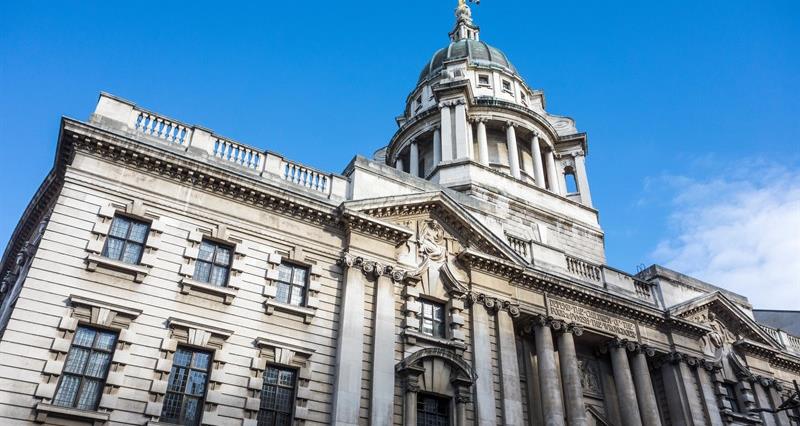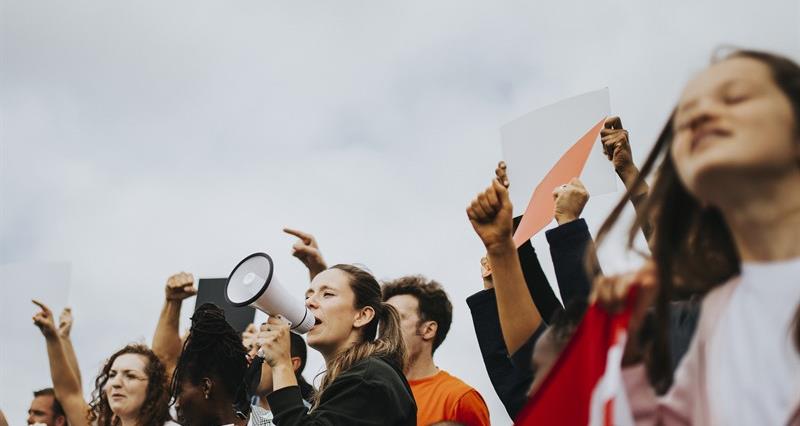Our laws say that peaceful protests should not blockade access to premises or involve intimidation or harassment of those working for a business.
The police will not usually attempt to disperse a peaceful protest, but may attend to ensure that the peace is maintained. When talking to the police it is important to be specific about the nature of the problems being experienced so that they are able to respond appropriately to the situation. Call 999 where there is an immediate issue requiring a quick response, and 101 in other situations.
Where activists go beyond peaceful protests, there are a number of legal tools to consider which are listed on this page. This list is not exhaustive, so it is important to clearly explain to the police exactly what is happening so that they can make an informed assessment of the situation.
Legal tools you can use
Trespass
Trespass is a civil matter so the police are unlikely to intervene. If trespass is a repeated/long-term issue it may be possible to apply to the civil courts for an injunction to prevent further trespass or to restrict the area in which protests can take place.
While the law does allow the use of reasonable force to remove trespassers from land, it is strongly recommended that you do not put yourself, family, or employees in any danger, or risk inadvertently harming a trespasser.
There are bailiff firms who are able to serve a notice on trespassers on your behalf requesting that they leave by a specified time. If the trespassers fail to leave, then the bailiffs will return and evict them on behalf of the landowner.
This method avoids any confrontation between you and the trespasser and could be quicker and cheaper than the conventional legal methods (i.e. seeking a possession order from the court).
Injunctions
It is possible to apply to the court for an injunction, which are court orders that either:
- prohibit individuals from doing certain things; or
- require individuals to do certain things.
In most instances, breaching an injunction is not a criminal offence, so the police will not be able to assist, and enforcement proceedings would have to take place in the civil courts. However, in some instances, it is possible for the police to be given a power of arrest in relation to breaches of an injunction.
In these situations, the applicant will have to apply to the court for this to be included, and the injunction will have to state that there is a power of arrest.
Read our guide on injunctions to address activism/protests to find out more.
Aggravated trespass
Aggravated trespass is a criminal offence. It differs from the civil act of trespass, as aggravated trespass is where the trespasser intentionally disrupting or intimidating/obstructing/disrupting those engaged in lawful activities on the land.
So, if protestors are causing disruption, the police may be able to intervene. It is therefore important to ensure that you communicate the full extent of the problems to the police.
Breach of the peace
The police can potentially arrest somebody who is committing a breach of the peace, which is where someone:
- Actually harms (or is likely to harm) a person or, in their presence, their property; or
- Puts a person in fear of such harm.
Where there is a sizable protest the police may also attend to monitor the situation to prevent a breach of the peace.
However, a balancing exercise is to be considered, particularly with the right to freedom of expression. So, it may be genuinely disturbing for a business owner to see a large group of protestors holding banners on the verge outside their business, but this alone would not constitute a breach of the peace. However, if they were shouting threats of violence, for example, that may mean that a breach of the peace has occurred.
Criminal damage
If damage is caused to fencing/gates/doors/locks when gaining access to property, or if any property is vandalised, this may amount to criminal damage. It is worth reporting such incidents to the police even if you think it is unlikely that any action will be taken, as it may help them to build up a picture of the activists’ movements and predict future incidents. Crime numbers may also be required if you intend to make an insurance claim.
Harassment
Harassment is a course of conduct that is intended to cause alarm or distress to another person. This means that there usually needs to be more than one incident before harassment can be considered. Keeping a diary of incidents can make it easier for the police to take action.
Harassment is a criminal offence and can also be dealt with under civil law, meaning that injunctions can potentially be obtained to prevent further incidents. For more information, read our guide to injunctions to address activism.
Harassment can cover a very wide range of behaviours, including phone calls, emails and letters, as well as shouting abuse/threats or repeatedly sounding horns/setting off alarms during the night.
Fear or provocation of violence
Using threatening, abusive or insulting words or behaviour or displaying a sign/writing/visual representation that is threatening, abusive or insulting can be a criminal offence if it is:
- intended to cause another person to believe that immediate unlawful violence will be used against them; or
- to provoke the use of immediate unlawful violence by another person.
This offence can be committed in public or private places. However, there is an exception where the behaviour occurs inside a private dwelling towards another person also within a private dwelling.
Affray, violent disorder or riot
These offences are rare but should be reported to the police immediately where they do occur.
The common thread through these elements is that a group of people together use or threaten violence for a common purpose, such that a reasonable person present would fear for their own safety (although no such person does have to be present).
The size of the group determines which offence is most relevant, with violent disorder requiring three or more people and riot 12 or more people.
Affray can be committed by one person or by a group, but for affray, more than just words are required. So, simply shouting would not be sufficient, but shouting whilst running towards someone may be.
Assault/battery
Thankfully this situation is rare, but if the protestors use violence against any person, offences such as assault and battery may be committed.
More commonly, protestors attempt to goad business owners/employees into lashing out, whilst others film the interaction. Edited versions without the build-up, are sometimes then posted online, or the footage may be passed to the police as evidence that an offence has been committed. So, it is important to ensure that you understand how to act in these situations.
Locking on
It is now a criminal offence for an individual to lock themselves on to an object or land with the intention of causing you or your business serious disruption.
‘Serious disruption’ can be caused where, for example, your day-to-day activities are disrupted, or if you are prevented (or delayed) from making or receiving a time-sensitive product.
It is also an offence for someone to come onto private land with equipment intended to be used for locking on.
See our other activism pages







